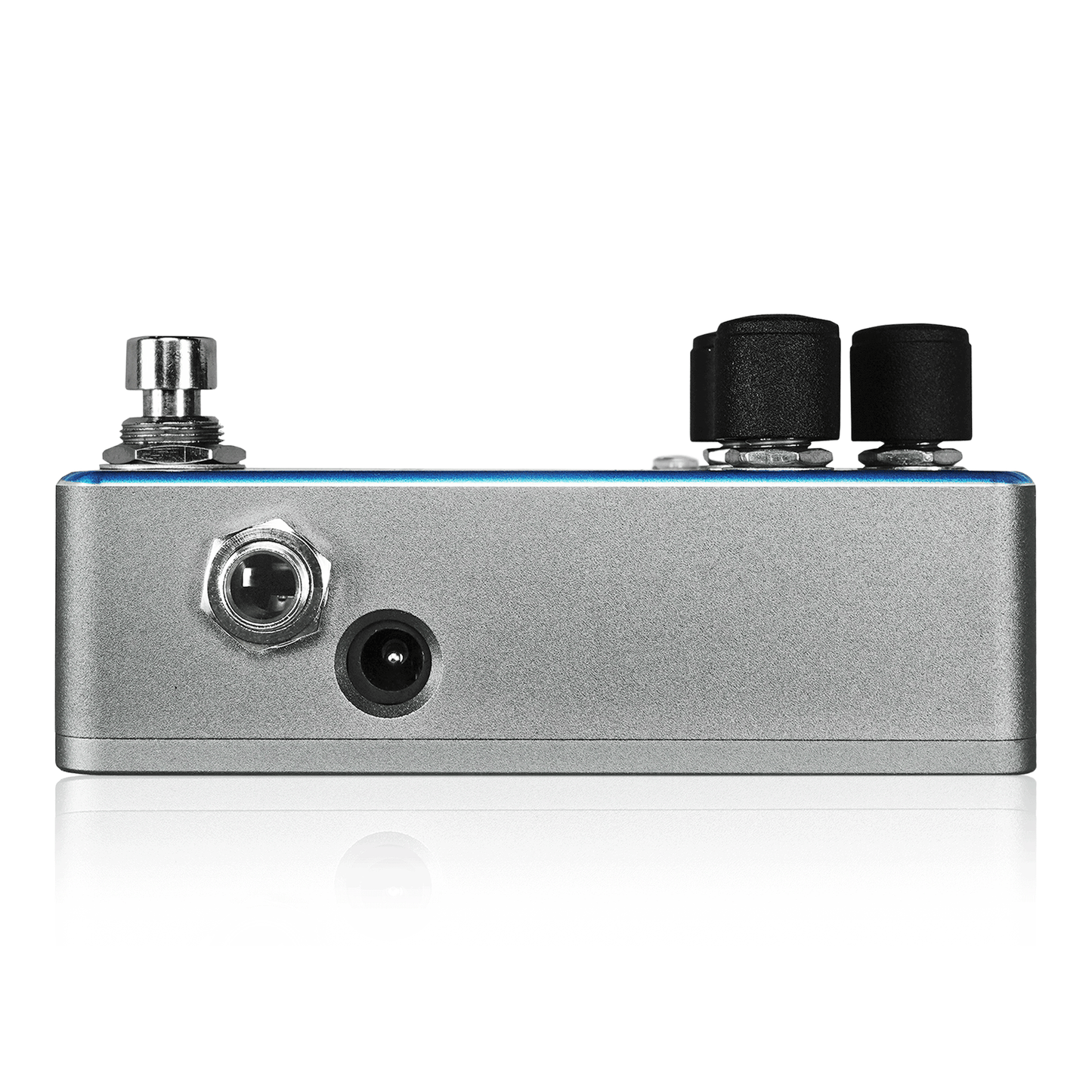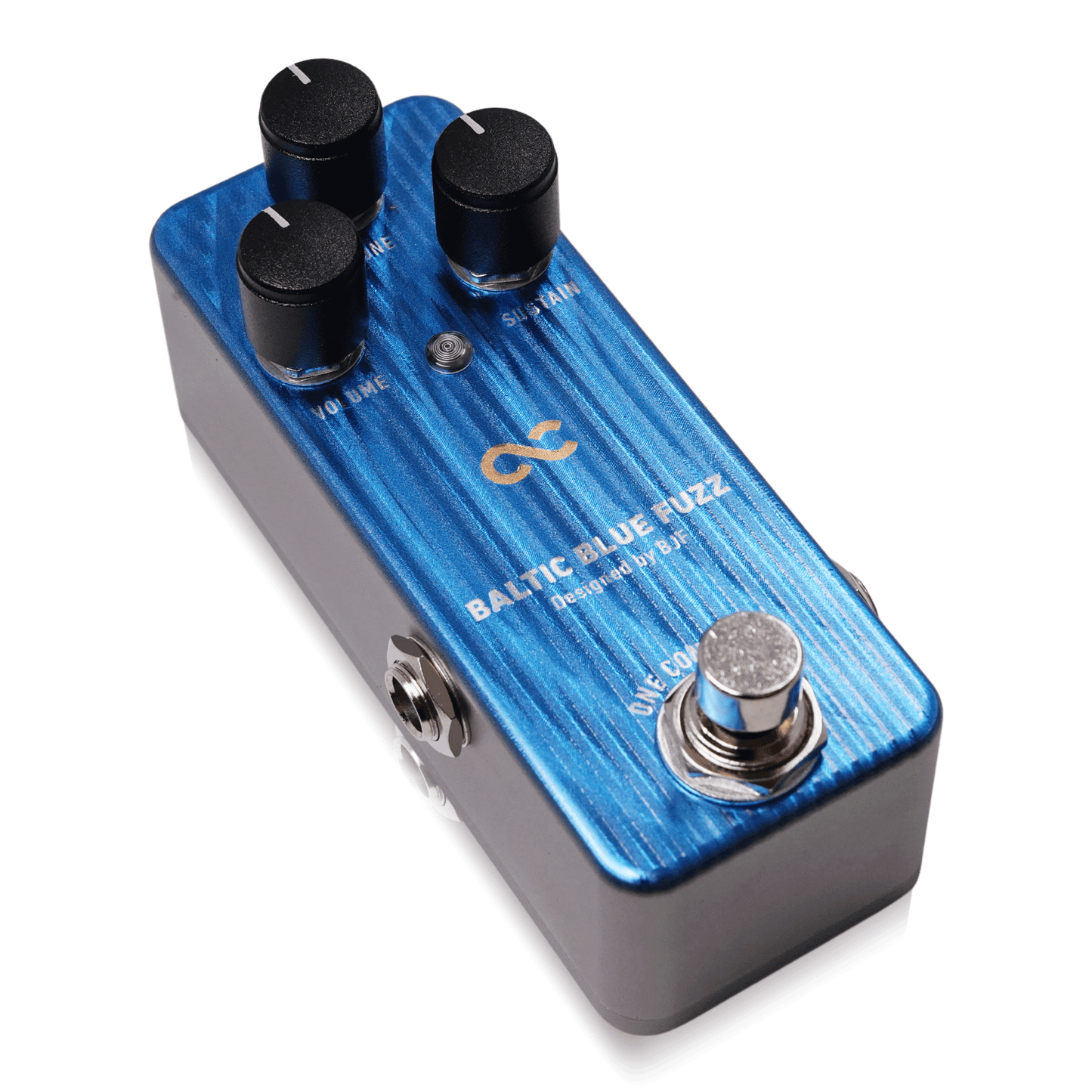BALTIC BLUE FUZZ (OC-BBFn)
BALTIC BLUE FUZZ (OC-BBFn)
Couldn't load pickup availability



Features
The BALTIC BLUE FUZZ Pedal recreates the recognizable vintage muff/fuzz tone, while producing a crisp sound without sacrificing the effect.
Specifications
Input impedance: 40K
Output impedance: 50K
Drive voltage: 9V
Power consumption: 6mA
S/N ratio: -70dBm
Size: 39Wx100Dx31H mm (excluding protruding parts)
47Wx100Dx48H mm (including protruding parts)
Weight: Approx. 160 grams
True-Bypass Switching
High Quality Aluminum Enclosure
Power: 9V Battery or Standard DC Power Supply
Bjorn's Description:
His ears, senses and passion have finally created the first fuzz pedal for One Control. It produces a sound that we have imagined and heard, but never before experienced. We look back into the past and into the future, and created the sound right in the present moment.
OneControl and BJF have created another legendary pedal, The BALTIC BLUE FUZZ.
History Of The Fuzz
There have been various fuzz pedals throughout history. They have created many legends and attracted countless guitar players seeking a vintage fuzz tone.
The Electro-Harmonix Big Muff Pi stands out amongst these, boasting decades of glorious achievements and outstanding reputation. It is one of the rare fuzz pedals in the world that has continued to evolve. Mike Matthews once described the Big Muff circuit as fuzz through robust filters. The One Control BALTIC BLUE FUZZ is a new generation vintage fuzz pedal designed by BJF based on this idea.
The world’s first fuzz pedal is supposedly the Maestro Fuzz Tone FZ-1 from 1962. This fuzz pedal was originally developed in the United States, and was later refined in 1965 and reborn as the FZ-1A.
However, at the same time there was another fuzz pedal that became a legend in the U.K. This was the Tone Bender developed by Gary Hurst. This pedal had a tone that was influenced by the FZ-1 circuit but was known for its original tone. Since launching the first generation (MK1), successive models had been developed including the Mk1.5 in 1966 and Mk2. These models increased the popularity of fuzz pedals tremendously. In 1966, the internationally renowned Fuzz Face was launched.
Fuzz pedals have matured over time from the original FZ-1.
In response to these British fuzz pedals, Bob Mayer in New York developed a fuzz pedal in 1969. He was an engineer at Electro-Harmonix and his fuzz pedal was the first Big Muff Pi, which is now called the Triangle. This model was sold until sometime around 1973, and after that, it was upgraded to a model called Ram’s Head with an improved housing. The Big Muff Pi is basically a fuzz pedal newly developed after the initial development in the U.S. and polished in the U.K. It’s a result of repeated research on fuzz pedals and provides the original fuzz sound that today’s guitarists seek.
The Design
The BALTIC BLUE FUZZ circuit is not a Big Muff clone but shares a similar topology. Some of the tones modern guitarists seek in Big Muff are those similar to the Triangle and Ram’s Head. Despite the difference in actual devices, the Triangle and Ram’s Head have almost identical circuits and their tones are very similar as well.
Reproducing the vintage fuzz tone is something all builders in the world are working on now. If they want to replicate the old time sound, they need to be very specific about the vintage NOS components, housing, pots, and circuit patterns.
One Control BJF series used an overwhelmingly small housing to provide an effect that has a renowned BJF circuit. We think it’s important to create a model that is universal and easily available in any situation. BJF combined multiple amplifying stages and filters when designing the BALTIC BLUE FUZZ. Although the idea behind this design is from Big Muff, he used an Op-Amp in order to ensure stability and match modern components.
Imagine the initial Big Muff tone combined with the sounds associated with the Triangle and Ram’s Head. This combination can be found when playing the BALTIC BLUE FUZZ. The BALTIC BLUE FUZZ is a pedal for creating a vintage muff sound but at the same time emphasizes the crisp sound that comes forward. Thus, while maintaining the same gain range as the vintage Big Muff, adjustments were made to ensure a slightly tighter and lower gain than the original. It was tuned to be used with electric guitars and filtered to create powerful feedback tones. It is free of the ``peakiness`` that is common among vintage fuzz pedals .
BJF added Tone control to the BALTIC BLUE FUZZ that is incomparably easier to use than the vintage original model. It is designed in a way so that guitar tones can be adjusted in the full knob range without being destroyed. It is also highly responsive and knob movements are reflected immediately. With the BALTIC BLUE FUZZ, just turning the Tone knob lets you find the sound you want.
- Bjorn Juhl
*Electro-Harmonix, Big Muff Pi, Maestro, Fuzz Tone, FZ-1, FZ-1A, Tone Bender, and Fuzz Face in the body text are used for explanation purposes only and One Control has no association with New Sensor Corp, Gibson Guitar Corporation, or Dunlop Manufacturing, Inc.
MOVIE
Collapsible content
Search by Switcher Function
|
▼FIND FROM AMOUNT OF EFFECT LOOP |
▼Series |



